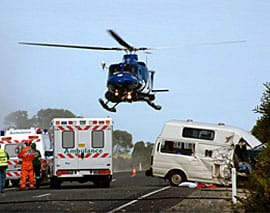Explaining the Four Types of Spinal Cord Injuries
The spine is at the center of the body’s movement and stability, yet it remains vulnerable to injuries that can permanently alter a person’s quality of life. Spinal cord irnjuries are among the most severe injuries, as they can lead to a range of physical limitations, including the loss of movement and sensation. Our team at The Law Offices of Keith Bregoff breaks down the four primary types of spinal cord injuries and highlights what each means for the victim.
Cervical Spinal Cord Injuries
These injuries are some of the most severe as they affect the uppermost portion of the spinal cord, located in the neck. This part of the spine, known as the cervical region, controls vital body functions, including the movement of arms, hands, and respiratory muscles. Cervical spinal cord injuries often lead to significant impairment, as they can interfere with breathing, speaking, and basic movement.
Injuries to the cervical spine are classified by the affected vertebrae, ranging from C1 to C7. An injury to the C1 or C2 vertebrae may lead to complete paralysis from the neck down. A lower cervical injury can result in loss of control over the hands and arms but may still allow for some shoulder and arm movement. The severity of a cervical spinal cord injury depends on whether it is a complete or incomplete injury. Complete injuries involve a total loss of function below the site of injury, while incomplete injuries mean some movement or sensation remains.
Thoracic Spinal Cord Injuries
These injuries are located in the upper and middle back and affect the vertebrae labeled from T1 to T12. The thoracic spine plays a central role in supporting the chest, abdominal muscles, and parts of the lower body, though it is less involved in fine motor control than the cervical spine. Injuries in this region are less common than cervical injuries due to the increased stability provided by the rib cage.
Individuals with thoracic injuries generally retain movement in their arms and hands but may experience paralysis or weakness in the lower body. A higher thoracic injury may result in complete or partial loss of movement from the chest down and often affect muscle control in the abdomen. Lower thoracic injuries, like those at T10, usually lead to loss of movement in the legs but may allow for partial use of abdominal muscles, providing greater balance and stability for sitting.
Lumbar Spinal Cord Injuries
These injuries occur in the lower back, specifically between the L1 and L5 vertebrae. This region of the spine is crucial for controlling the hips, legs, and some of the abdominal muscles. Injuries to the lumbar spine can result in a range of impairments, including limited or complete loss of movement in the legs, but typically do not affect upper body strength and function. With Lumbar spinal cord injuries, individuals often experience varying degrees of paraplegia, where function and sensation in the lower body are affected. Because the lumbar spine supports much of the body’s weight, injuries in this area can make standing, walking, and sitting difficult without assistance. However, with appropriate therapy and assistive devices, some individuals with lumbar injuries can regain the ability to stand or walk short distances.
Physical rehabilitation plays a critical role in the recovery process as it can help strengthen remaining muscle groups and develop strategies to maintain independence. Many individuals with lumbar injuries find that they can lead active lives with adaptive equipment and modifications, although limitations may still apply depending on the extent of the injury.
Sacral Spinal Cord Injuries
Sacral spinal cord injuries are located at the base of the spine, in the area surrounding the pelvic region. The sacrum consists of five fused vertebrae labeled from S1 to S5, which play a significant role in controlling the hips, thighs, and pelvic organs. Because of their location, sacral injuries are less common and generally less severe compared to injuries in other regions of the spine.
Individuals with sacral injuries typically retain control over most of their upper body and may have only limited effects on lower body mobility. However, these injuries often impact bladder and bowel function, as well as sexual function, due to the sacrum’s connection to the pelvic organs. While sacral injuries may not result in complete paralysis, the impact on quality of life can be significant, particularly in areas affecting daily personal care.
Contact Our Legal Team for Help
At The Law Offices of Keith Bregoff, we are committed to supporting those affected by these life-changing injuries. We offer guidance, resources, and legal advocacy to help spinal cord injury victims sort out their options and pursue the assistance they deserve. Call us today at (772)-492-8967.



